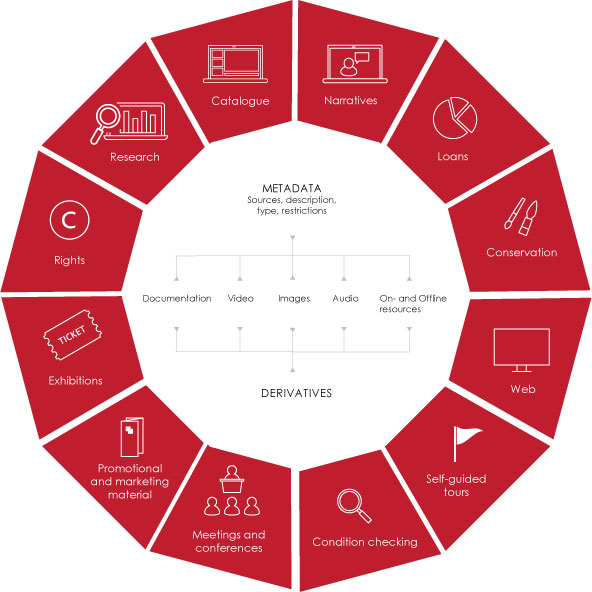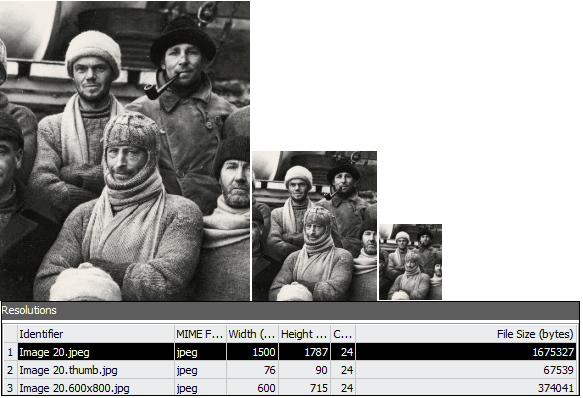EMu has fully integrated multimedia management, with support for all media types, including:
- Image, video, audio
- Word processing documents, spreadsheets, presentations
- Any online or offline resource
- All Dublin Core Metadata fields (the complete Dublin Core attribute set can be recorded for each multimedia resource), e.g.:
- Type of resource (image, audio, video, etc.)
- Format of the resource (GIF, JPEG, AU, WAV, MPEG, etc.)
- Source
- Description
- Creators and other contributors
- Restrictions on the use of the resource

When an image is added to the multimedia repository, any metadata (EXIF, IPTC or XMP) is extracted from the file and is searchable within EMu.
Any format can be generated on demand and at any resolution and, for efficiency, some derivatives can be generated automatically as multimedia is added to EMu. For instance, when an image is added to EMu, a thumbnail JPEG can be created for browsing, an 800x600 PNG image for publication on the web, whilst maintaining the image in its original format and resolution. Any number of resolutions (size and format) can be stored for a multimedia resource in the one Multimedia record.

View of different derived resolutions of an image of a photograph.
The concept of derivatives includes all forms of multimedia, not just images. For example:
- A video in AVI format could also be stored as MPEG and MOV versions.
- A Microsoft Word document may have a PDF, HTML and text version.
Using this mechanism it is possible to provide full text retrieval for any document type (e.g. Word, Excel, Access, Project, Web Pages, WordPerfect, Lotus Notes) that can be converted to a textual form.
EMu’s multimedia repository can also be used to store multimedia resources that aren’t specifically related to any collection record (e.g. minutes of meetings, planning papers).

